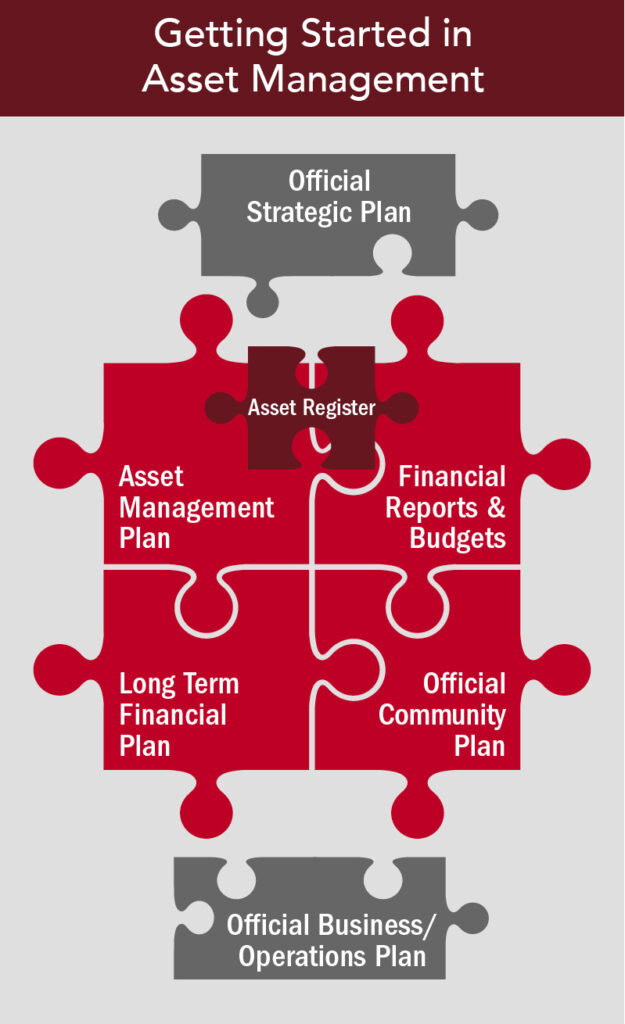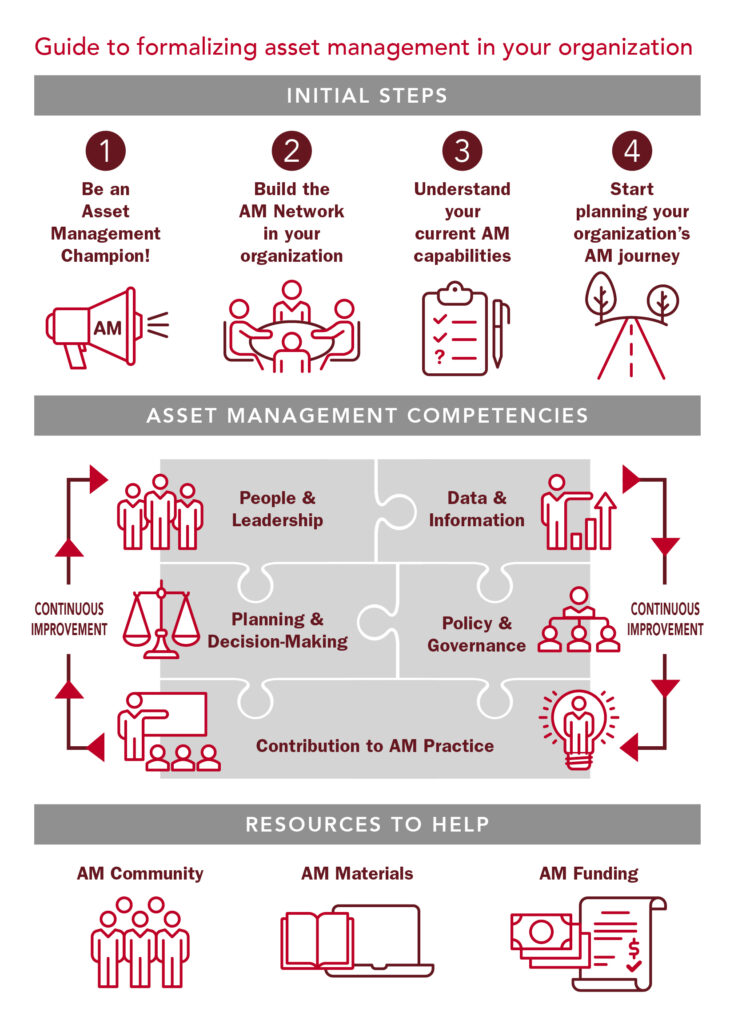You are already doing some level of asset management
“Everyone is doing some element of asset management; you have to be! But maybe you aren’t following a structured approach. It’s not as daunting as we first thought, we are doing parts of it already.”
Travis Rob, Manager of Operations and Facilities, Fort Frances, Ont.
You are already delivering services to your customers
People turn on their taps and get water. People drive on your roads. People go to the recreation centres and libraries. Peoples call the Fire Department looking for help. Your community is already benefiting from those services.
But, maybe the strain is starting to show. Maybe there are regular interruptions to your water supply due to burst pipes. Maybe you are having to do more repairs on your buses due to the potholes in the roads that don’t get fixed. Maybe there isn’t enough funding to repair the pool deck at the rec centre and cutting services is becoming a reality.
“If you aren’t planning for asset management and managing your assets proactively in line with your services, you are reacting to them and paying more for it as a result. Your undermaintained and old infrastructure will jump up to bite you soon, if it hasn’t already!”
Alicia Keating, Assistant City Treasurer City of Fredericton, N.B.
You are already operating and maintaining your assets
The beat goes on. You are out there operating your assets, fixing them when they break, trying to plan for future maintenance needs. How are you balancing planned versus reactive maintenance? Do you feel like you are always reacting to things breaking?
Asset management is about much more than maintenance and work orders. For more information on this refer to the “Managing Assets vs. Asset Management” by the ISO 55000 Technical Committee, which is available for download here.
You are already doing budget planning and setting tax rates, as well as your PSAB 3150/TCA Reporting
Every year you go through the process of setting your budgets and tax rates. Some of you may be managing to move to multi-year budget commitments (having an understanding of your longer term infrastructure needs is a critical component for moving to multi-year budget commitments). Is it just last year +/- three per cent? Maybe it’s another year of zero per cent tax increases, and a reduction of budgets to account for inflation? How confident are you in the numbers in your long-term capital plan?

When the Public Sector Accounting Board (PSAB) Standard 3150 came into effect for Canadian municipalities in 2009, it provided a solid base for data collection for a municipality to list, track and update information on their infrastructure. Tangible Capital Asset (TCA) reporting is an annual exercise that is done to satisfy the financial reporting requirements and requires updates on asset acquisition, asset disposal and annual depreciation. While the data collected for PSAB 3150 can be seen as a component to asset management, it does not encompass all relevant information for future planning for a municipality, nor does is account for the services and levels being provided by the infrastructure. PSAB reporting focuses on historical data, but does not take into account current and future costs of infrastructure and new ways of delivering a service through new infrastructure. To put it simply, PSAB 3150 does not equal asset management.
Good asset management needs not just historic financial reporting, but also informed, meaningful and responsible long-term planning. PSAB 3150 is a useful component of good asset management.
This video from the Government of Saskatchewan helps illustrate the importance of asset management in planning infrastructure for future generations.
“Through the completion of Asset Management Plans, municipalities began marrying fiscal data, generally held within finance, with condition and risk assessments, housed in Engineering/Public Works, to reveal the true picture of municipally owned infrastructure.”
Patrick Kelly, Director of Finance, Township of Wilmot, Ont.

You have various community plans in place already
Asset management is intended to compliment the work you are already doing in your municipality: connecting your various plans and budgets to your strategic objectives.
Asset management can bring everything together
Developing a formal asset management approach will help you connect valuable components and information from across your organization. You need to bring together people and skills across the organization to solve your service and infrastructure problems: engineers, planners, accountants, and elected officials. Asset management is a tried and tested approach to do this! It’s a multi-disciplinary effort that will help different departments work together towards your community goals.
Formalizing your approach to asset management
In 2014, a collection of municipalities from CNAM’s membership worked with several leading industry associations to develop the Asset Management Primer (AM Primer) – a document that accompanies the Canadian Infrastructure Report Card. The AM Primer published a series of recommendations for Canadian communities surrounding their management of infrastructure, with the first two being to develop formal asset management processes and governance in the organization. This section of the web portal will take you through how to take your initial steps in your asset management journey, what you need to do to start formalizing your asset management processes and how to put governance in place.


